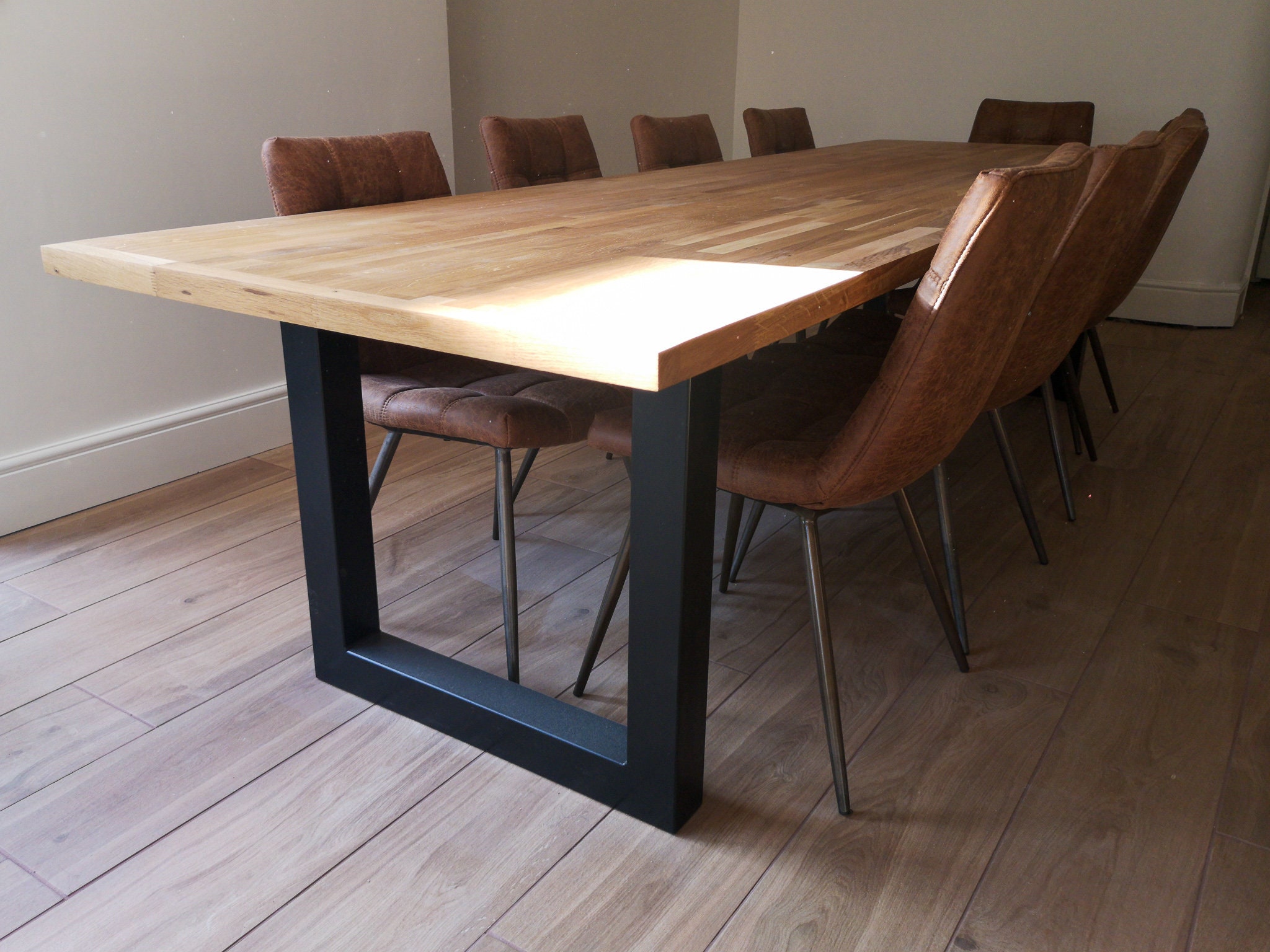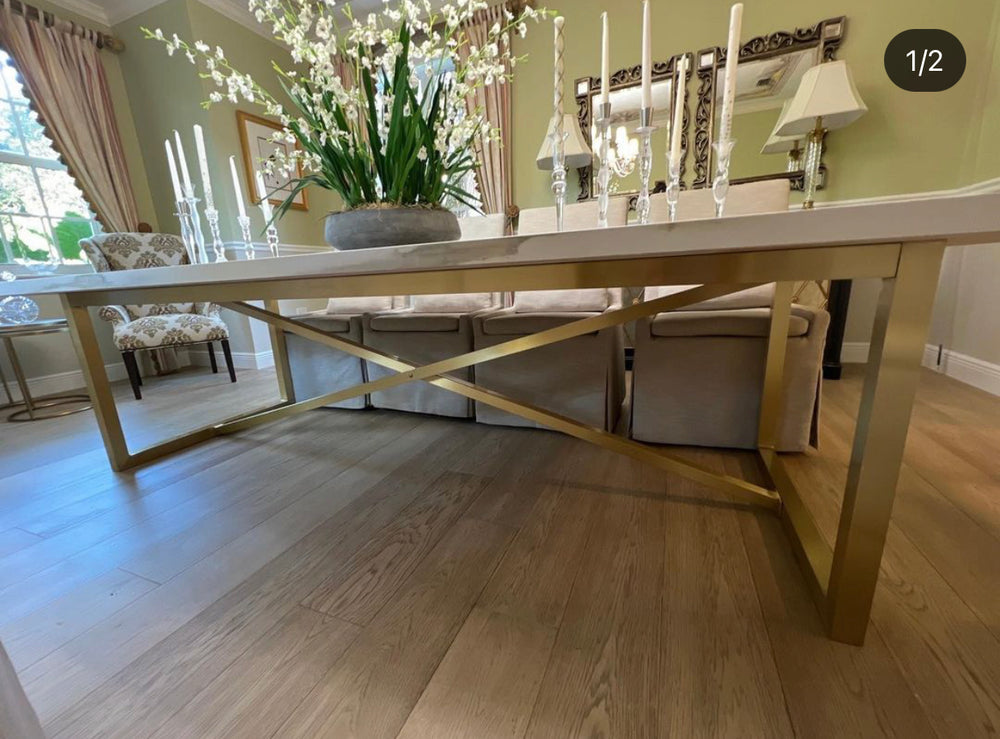Distinct Dining Room Table Legs to Change Your Dining Area
Wiki Article
Picking the Perfect Eating Table: What Styles Work Best for Your Home?
Picking the optimal dining table for your home can be a nuanced process that stabilizes aesthetic appeals and functionality. Whether your room leans towards typical sophistication, modern minimalism, rustic beauty, or commercial chic, the variety of designs offered can deal with diverse tastes. Each style uses one-of-a-kind benefits and obstacles that can either enhance or interrupt your eating area's consistency. Understanding just how different products, forms, and sizes engage with your existing style is vital. To browse these options properly and find a table that genuinely complements your home, think about the adhering to elements carefully.Assessing Your Area
Reviewing the measurements and layout of your dining area is a vital very first step in choosing the excellent eating table. Begin by determining the size and size of the area, accounting for doorways, home windows, and various other building attributes that can affect table positioning. This ensures that your table not just fits yet additionally permits comfy activity around it.Consider the variety of individuals you typically amuse. A table needs to suit your house's day-to-day demands while using enough adaptability for periodic guests. As a policy of thumb, allot at the very least 24 inches of table size per individual to make sure a comfortable dining experience.
It's also important to maintain appropriate clearance around the table. Preferably, there need to go to least 36 inches between the table side and walls or other furnishings, allowing simple access and activity. For rooms where chairs with arms or extra storage units like buffets are involved, raising this clearance to 48 inches is suggested.
Illumination and atmosphere play substantial functions. Guarantee that your eating table lines up with existing lighting components or prepare for adequate lights options. This extensive spatial analysis assurances that your dining table not just fits physically yet additionally integrates with your room's total performance and visual.
Popular Table Styles

Conventional eating tables commonly include elaborate details, curved legs, and rich timber surfaces, evoking a sense of ageless sophistication. They are best for homes with traditional design or those looking to include a touch of refinement to their eating area.
Modern dining tables prioritize simpleness and tidy lines, typically integrating materials like glass and steel. These tables are suitable for contemporary spaces, providing a streamlined and minimalist look that complements minimal style viewpoints.
Rustic eating tables, on the various other hand, emphasize all-natural products and a handcrafted appearance - dining room table legs. They often include recovered wood and a troubled surface, creating a cozy and inviting ambience. These tables function well in farmhouse-style homes or those seeking a comfy, organic feeling
Industrial eating tables combine resources such as metal and timber, typically showcasing an utilitarian visual. This style is fit for lofts this website or city areas, my link including a touch of tough beauty and toughness to the dining experience.
Each design offers distinctive advantages, making it important to select one that aligns with your home's general layout and your personal choices.
Product Options
When picking a dining table, the choice of material plays a crucial function in establishing both the table's looks and functionality. Wood, steel, glass, and composite materials each deal one-of-a-kind benefits and difficulties, making it important to line up the product with your home's decor and way of life demands.Wood is an ageless and functional option, offered in ranges such as oak, walnut, and mahogany. Recognized for its resilience and warmth, timber enhances both standard and modern interiors. It calls for normal maintenance to prevent scratches and warping.
Metal tables, commonly crafted from stainless-steel, light weight aluminum, or functioned iron, are commended for their modern appeal and robustness. They are particularly suited for industrial or minimalist settings yet can be vulnerable to damages and might really feel cool to the touch.
Glass table bring an air of style and visibility, perfect for smaller sized spaces as they create an illusion of more area. While very easy to clean, glass can be at risk to spots and calls for cautious dealing with to prevent chips and fractures.
Composite materials, such as MDF and plywood, offer cost-effective and personalized remedies, though they might lack the durability of natural products. Picking the ideal material ensures your table is both a useful property and an aesthetic joy.
Forming and Size Considerations
After establishing the suitable product for your dining table, the following consideration is picking the best form and size to match your space. Alternatively, round tables promote a feeling of intimacy and are outstanding for smaller eating locations, encouraging discussion by eliminating corners and making every person feel similarly included.Size is similarly crucial and ought to be determined by both the room's dimensions and the variety of individuals you plan to seat frequently. Generally of thumb, designate at the very least 24 inches of table size each to guarantee comfy eating. In addition, consider the table's clearance space: there must go to the very least 36 inches between the table edge and the walls or various other furnishings. This makes certain that diners can relocate around quickly without really feeling confined. Extending tables provide versatility if you regularly organize bigger celebrations, providing additional seating when needed without occupying additional area daily. Picking the appropriate form and dimension ensures both practicality and aesthetic harmony in your dining area.
Matching Your Style
Selecting an eating table that integrates with your existing decor is pivotal in developing a cohesive and welcoming area. Begin by evaluating your current interior decoration style, whether it be modern, standard, rustic, or diverse. The table ought to enhance the general aesthetic, not complete with it. A streamlined, minimalist table with clean lines is excellent for a contemporary home, while a vintage, luxuriant table fits an extra conventional setup.
Color and material are similarly substantial. If your design includes cozy tones and visit homepage natural products, take into consideration a wooden table to improve the natural feeling. Conversely, a glass or steel table might be better in a space dominated by trendy colors and industrial aspects. Focus on the coating, as it must mirror other furniture and components to keep harmony.
A rough-hewn, reclaimed wood table can include personality to a rustic space, while a refined marble surface area can boost an extravagant eating area. A well-matched eating table not only boosts aesthetic appeal but additionally enhances the overall eating experience.

Final Thought
Choosing the suitable eating table demands mindful factor to consider of area, design, materials, shape, and size. Traditional tables complement classic interiors with rich timber coatings, while modern-day tables fit contemporary settings through glass and metal.Report this wiki page